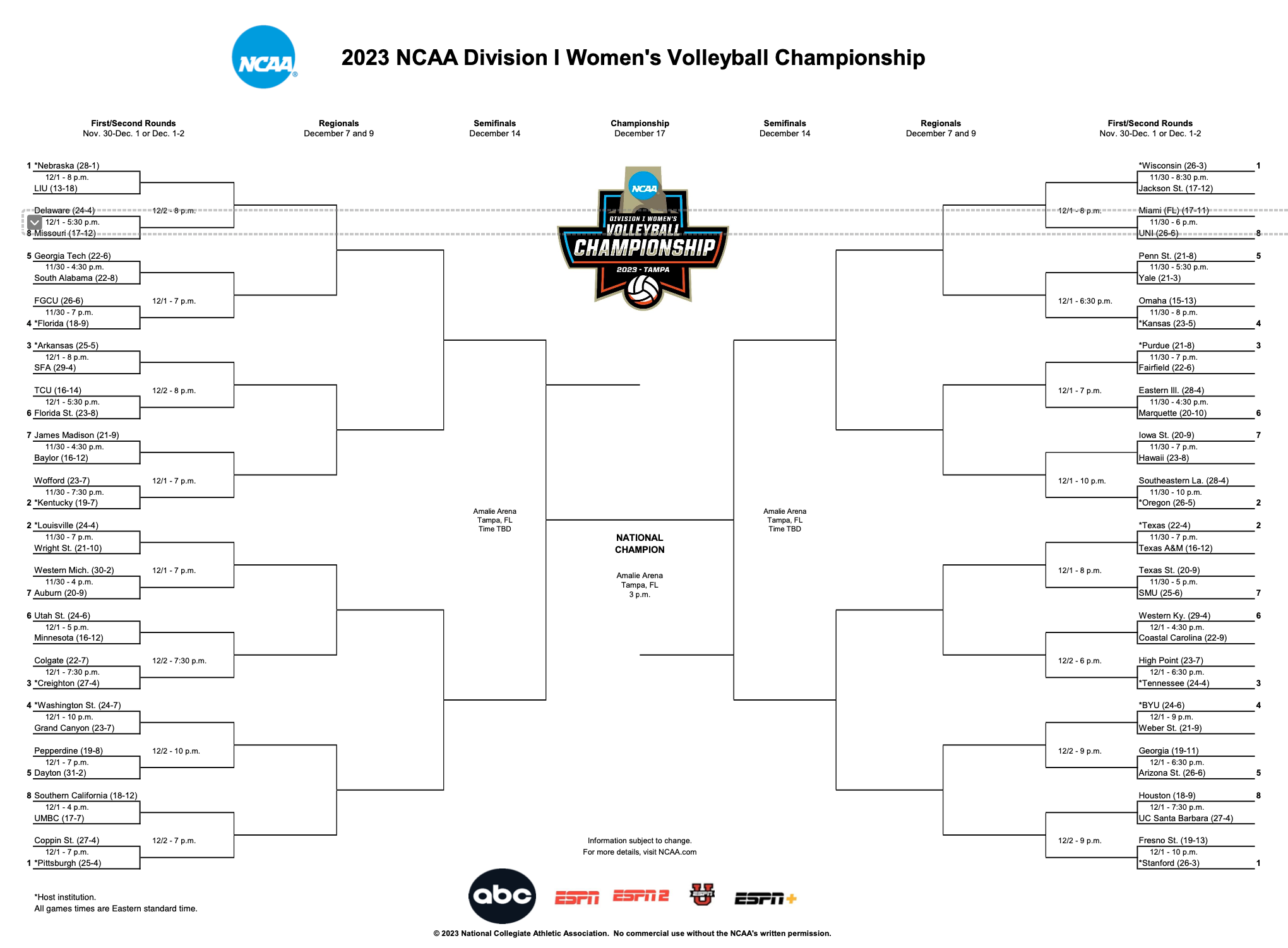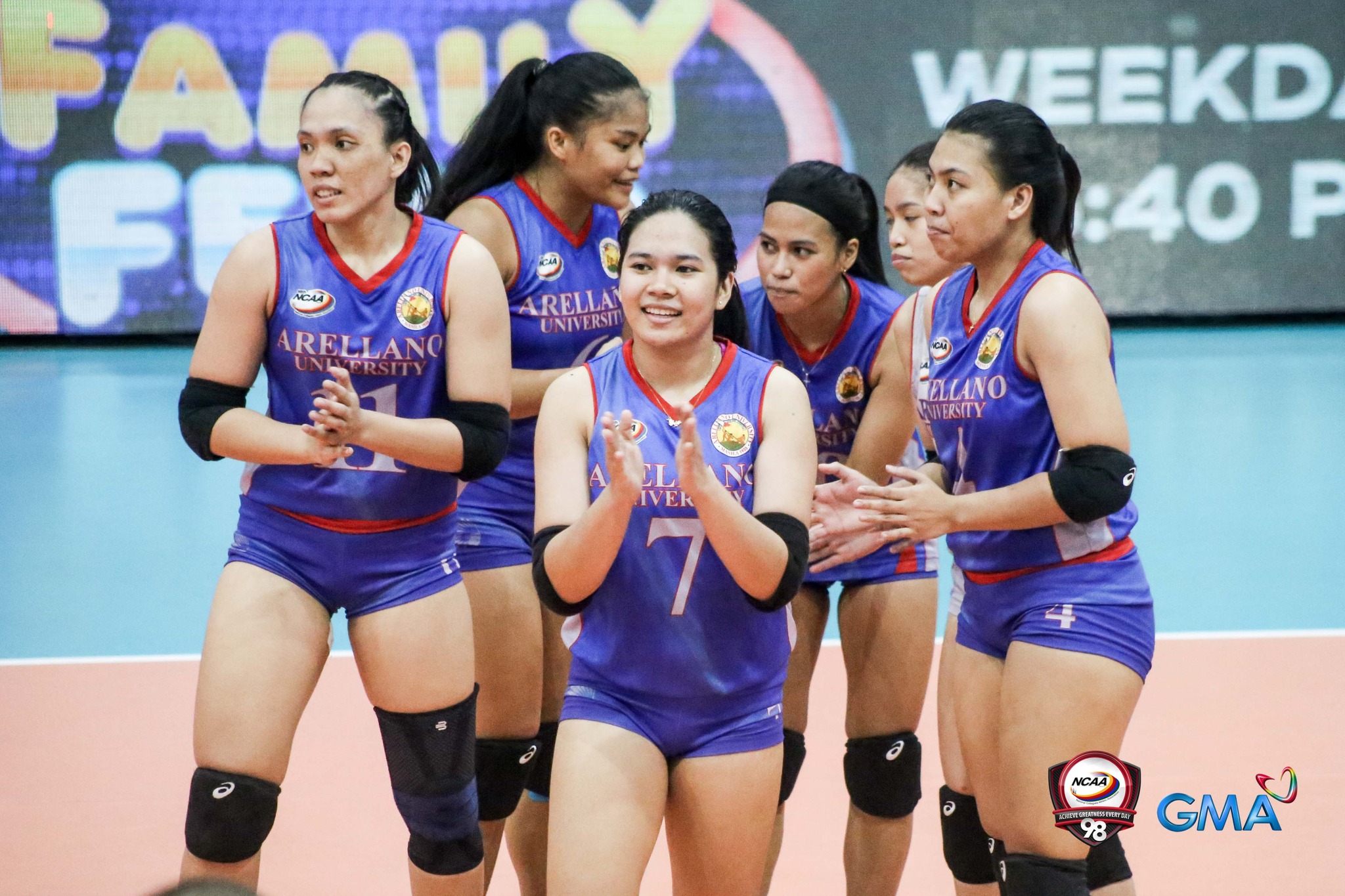The Complexities of the NCAA Women's Volleyball Tournament: A Critical Examination
Introduction
The NCAA Women's Volleyball tournament is one of the most prestigious sporting events in the United States, showcasing the nation's top collegiate women's volleyball teams. The tournament, held annually since 1981, brings together 64 teams from across the country to compete for the NCAA Division I Women's Volleyball Championship.
However, beyond the excitement and spectacle, the NCAA Women's Volleyball Tournament poses a number of complexities that raise questions about its fairness, competitiveness, and impact on the sport of women's volleyball.
Tournament Format and Selection
The NCAA Women's Volleyball Tournament follows a single-elimination format, with the top-16 seeds receiving a bye to the second round. This format gives higher-ranked teams a significant advantage, as they only need to win four matches to reach the Final Four.
Concerns have been raised about the selection process for the tournament. The 64-team field is chosen by the NCAA Volleyball Committee, which has faced criticism for its lack of transparency and bias towards certain conferences. This has led to accusations that the tournament is not truly representative of the nation's top teams.
Player Welfare and Injuries
The intense physical demands of women's volleyball have raised concerns about player welfare. The nature of the sport, with its repetitive jumping and hard landings, can lead to injuries, including concussions, knee injuries, and stress fractures.
The NCAA has implemented measures to address player safety, such as limiting practice time and mandating protective equipment. However, some experts argue that these measures do not go far enough to protect student-athletes from the risks associated with high-level competition.
Academic Impact
Participation in the NCAA Women's Volleyball Tournament can have significant implications for players' academic progress. The tournament takes place during the fall semester, which coincides with a critical time for students in terms of coursework and exams.
Studies have shown that student-athletes who participate in high-level competitions may face challenges in balancing their athletic and academic commitments. This raises questions about the NCAA's responsibility to ensure that student-athletes have the necessary academic support.
Women's Volleyball Development
The NCAA Women's Volleyball Tournament holds immense sway over the development of women's volleyball in the United States. The tournament provides a platform for the sport and inspires young athletes to pursue volleyball at the collegiate level.
However, some critics argue that the tournament's emphasis on winning can lead to a narrow focus on short-term success at the expense of long-term player development. They advocate for a more balanced approach that prioritizes skill development and player well-being.
Conclusion
The NCAA Women's Volleyball Tournament is a complex and multifaceted event that raises important questions about fairness, competitiveness, player welfare, and the impact on the sport. The format and selection process need to be reviewed to ensure a level playing field and true representation of the top teams.
Player welfare should be a paramount concern, and the NCAA must do more to protect student-athletes from the physical and academic risks associated with high-level competition. A comprehensive approach is needed to balance academic progress with athletic pursuits.
Finally, the NCAA Women's Volleyball Tournament should be used as a platform to support the growth and development of women's volleyball. By fostering a culture that values long-term player development and well-being, the tournament can make a lasting contribution to the sport and the lives of its participants.
Read also:
Jimmy Fallon's 2025 Career Trajectory: A Bold Leap Into Uncharted Territory

